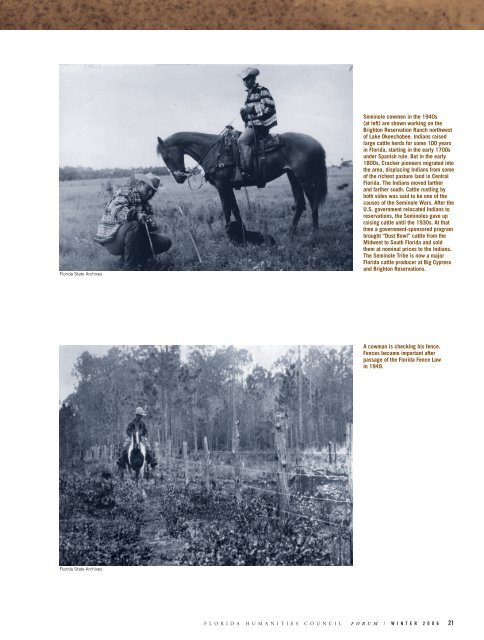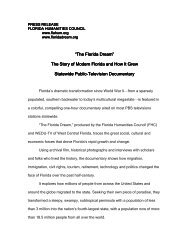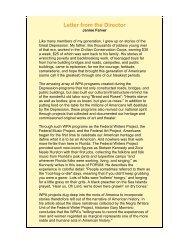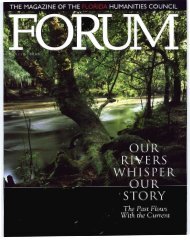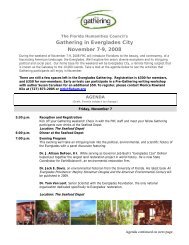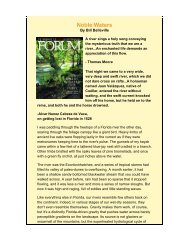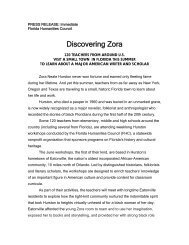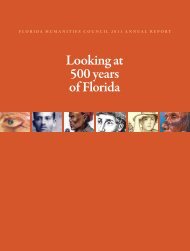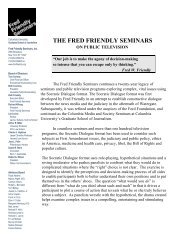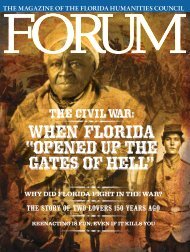THE MAGAZINE OF THE FLORIDA HUMANITIES COUNCIL
THE MAGAZINE OF THE FLORIDA HUMANITIES COUNCIL
THE MAGAZINE OF THE FLORIDA HUMANITIES COUNCIL
You also want an ePaper? Increase the reach of your titles
YUMPU automatically turns print PDFs into web optimized ePapers that Google loves.
Florida State Archives<br />
Florida State Archives<br />
Seminole cowmen in the 1940s<br />
(at left) are shown working on the<br />
Brighton Reservation Ranch northwest<br />
of Lake Okeechobee. indians raised<br />
large cattle herds for some 100 years<br />
in Florida, starting in the early 1700s<br />
under Spanish rule. But in the early<br />
1800s, Cracker pioneers migrated into<br />
the area, displacing indians from some<br />
of the richest pasture land in Central<br />
Florida. The indians moved farther<br />
and farther south. Cattle rustling by<br />
both sides was said to be one of the<br />
causes of the Seminole Wars. After the<br />
U.S. government relocated indians to<br />
reservations, the Seminoles gave up<br />
raising cattle until the 1930s. At that<br />
time a government-sponsored program<br />
brought “Dust Bowl” cattle from the<br />
Midwest to South Florida and sold<br />
them at nominal prices to the indians.<br />
The Seminole Tribe is now a major<br />
Florida cattle producer at Big Cypress<br />
and Brighton Reservations.<br />
A cowman is checking his fence.<br />
Fences became important after<br />
passage of the Florida Fence Law<br />
in 1949.<br />
F L O R I D A H U M A N I T I E S C O U N C I L F O R U M / W I N T E R 2 0 0 6 21


